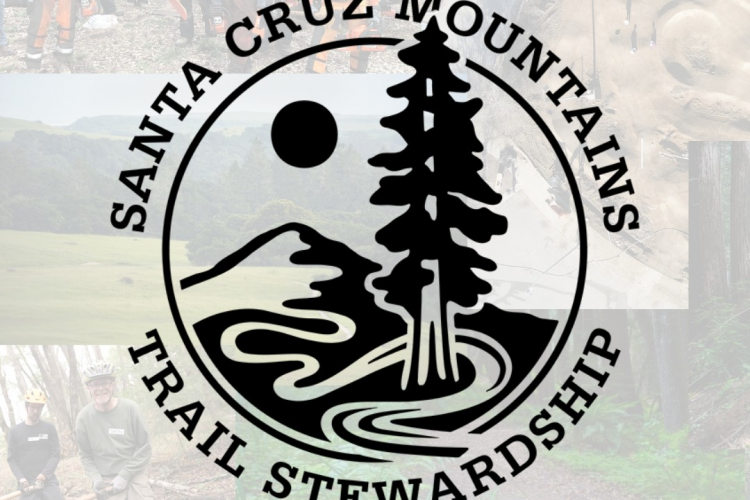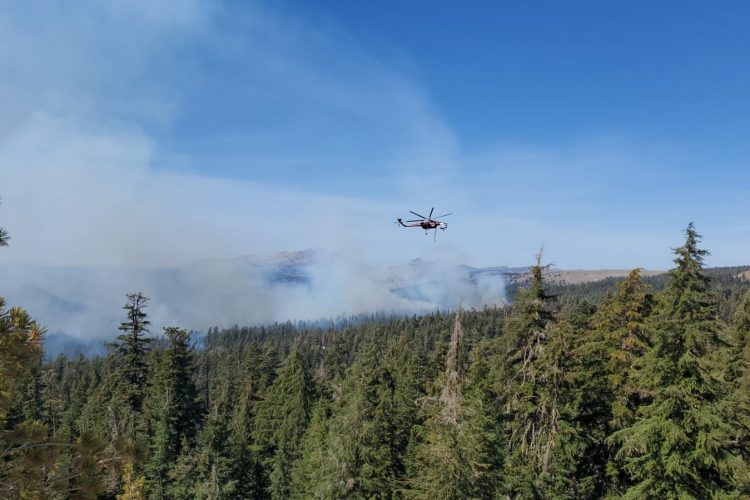
Matt Baffert remembers the rain starting in the late fall and early winter around Los Angeles. And then, it just didn’t stop. Baffert, CEO and founder of the Lowelifes Respectable Citizens Club, a trail work group based around the Angeles National Forest, said that years after the 2020 Bobcat Fire, they are seeing the damage to the trails. The Lowelifes work primarily in National Forest areas and on mitigation and restoration projects born from repetitive fire cycles.
“The impacts have been huge within our specific kind of trail zone,” he said. “We were already in there working because it was damaged from the fires in 2020 and then we had dry years, so the real effects of the erosion from the fire didn’t really kick in until kind of this year really to be honest. So yeah, it was just terrible.”
California has seen record rain up and down the state, with atmospheric rivers bringing in wet storms and dumping continuous moisture in the form of snow and rain, burying roads, ski resorts, and mountain trails.
Rain between October 1 and January 16 broke the record for the amount of rain in any 22-day time frame, according to USA Today. That number is just under 18 inches, though the largest water year — the amount of rainfall between October 1 of a given year and September 30 of the next — occurred in 1982-1983 with almost 43-inches.
Now, the state’s precipitation is well ahead of any typical water year, by more than 7 inches. Statewide snowpack is about 240% ahead of the average snowpack levels.
“The snow is always fun until you see the damage from all the low elevation snow, which isn’t cool,” said Baffert.
The Lowelifes, named after Mount Lowe, a landmark in the San Gabriel Mountains, have been working on major projects on Condor Peak, which Baffert said has held up well considering the storms, but the trail work they have been conducting has been moot lately. Every time the group seems to get ahead on trail work another storm comes in and sets them back.
“It’s been a little overwhelming,” he said. “We’re kind of at that period now where so much of the work we did last year is becoming undone.”
As is often the case with serious precipitation events following fire events, vegetation that perviously existed isn’t soaking up the water, so instead, it pulls soil down with it as it sheds across the mountain. The Lowelifes are seeing a lot of erosion in areas, especially if fires burned above a trail.
“Some of those areas, it’s like catastrophic damage to be honest.” Much of their work lately has been clearing chaparral and other shrubbery which has been getting pulled into trails with the snow. Before they can repair any trail tread, they first have to get the trails cleared of the shrubs.
The day before we spoke with Baffert, he said the U.S. Forest Service had just lifted restrictions on volunteers in the forest due to limited communications. They’re hoping to get back out there soon and power through as much work as possible with chainsaws and machinery while they can. When the summer dries out the mountains and precipitation thins, they’ll face restrictions on certain machinery because of fire risks.
Matt De Young and Katy Poniatowski of the Santa Cruz Mountains Trail Stewardship have unfortunately felt similar conditions with record rain this year.
“Soquel Demonstration State Forest (SDSF) was hit particularly hard. The forest’s home to the beloved Flow Trail, which Singletracks actually named the #1 flow trail in the United States. Usually, we’ll see over 50,000 riders per year out in SDSF, but with over 6.5 feet of rain hitting the forest since the start of the year, the area’s less of a riding mecca and more of a nightmare of fallen trees, down power lines, and washed-out roads. The forest’s been closed to riders for four months, and we know what a big blow that is to our community.”
The organization partnered with Ibis Cycles to help bolster funding for the reopening of the forest and trail work related to wildfires. So far they’ve raised $20,000 toward a $150,000 goal.
Down south


Matt Bartelt of the San Diego Mountain Biking Association (SDMBA) said he usually judges the severity of the rain in a season based on the condition of the Los Peñasquitos Canyon trails in northern San Diego. They have a number of rain gauges in the canyon and a number of bridges. Only one bridge that was recently redesigned survived the winter. Bartelt has been measuring the rain flow through the canyons in feet.
“It’s been unrelenting,” said Bartelt. “It’s just is crazy the amount of water that goes through there and the rutting this year. Everything is so wet, and because everything’s so heavy, it rains again, and the water’s just running down trails and eroding them away.”
Bartelt said much of the soil in the area is adobe. When it gets too wet, the soil liquifies, making it impossible to work with. Some trails have been completely stripped away, buried with rock, or have water bubbling up from under them. Creating drains and grade reversals helps, but only to a point.
Some of their restoration projects will only take a few days, but “others are going to take serious construction,” like the Copper Creek trail in Encinitas which was completely washed over. In those cases, they’ll need to fill in the bed with rock and crushed gravel and completely reshape the trail.
Bartelt believes the continuous rain over the winter has been worse than any one storm too, and dry periods after rainstorms can be deceiving to riders and hikers who want to get back out on trails that are usually enjoyable most winters. He said SDMBA’s volunteers have been eager to get out and help restore the trails. As they get deeper into spring, he’s hopeful the weather will lighten up on them a little. This season has been unlike anything else he’s seen, at least in a long time.
“A winter from somewhere else is what it was,” he said. “I don’t know if it was the wettest we’ve ever had, but because it’s been prolonged it was this continual dousing. If you get eight inches in one storm, it’s going to do damage. If you get eight inches over six storms, it probably does more damage. Because more people will use the trail and water is going to do what it does.”






















1 Comments
Apr 15, 2023
All I can say is be safe out there during your toild, peeps and be grateful we have trails to work on.